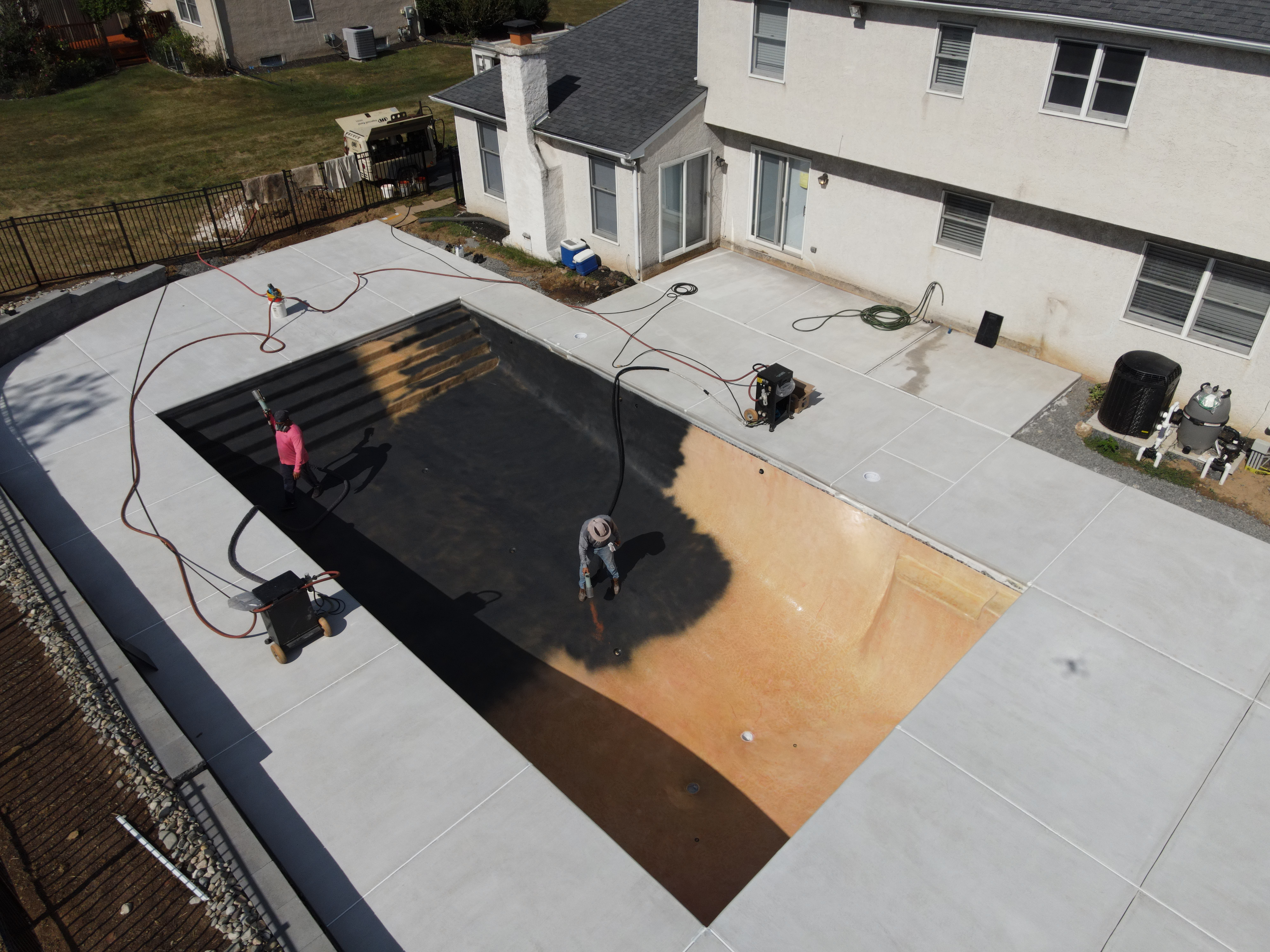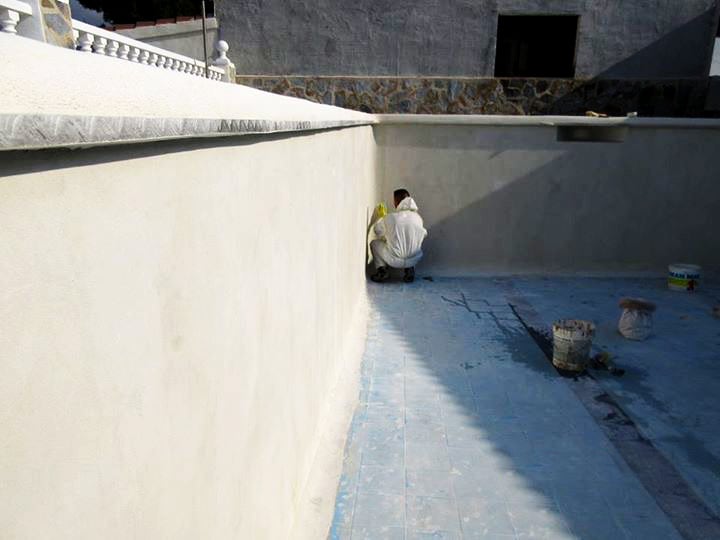What is the Difference Between Resurfacing and Replastering a Pool?

This article breaks down two popular pool surface restoration methods: resurfacing and replastering.
What is Pool Resurfacing?
Pool resurfacing involves removing the top layer of the pool surface and applying a new finish. It is a cost-effective option that takes less time than replastering.
Process
Pool resurfacing is a key aspect of pool refurbishment that involves taking off the old surface and putting on a new one. This method makes your pool look as good as new without spending too much money or time.
Here’s how the process works:
- The first step involves draining the pool to get rid of all the water. This is necessary to access the surface that needs work.
- Next, workers use tools to remove the top layer of the pool’s interior. They might scrape, sand, or blast it away depending on what material your pool has.
- After clearing out the old surface, they clean the area thoroughly. This ensures no debris or dirt interferes with the new finish.
- Then comes choosing the new material for your pool’s surface. Options include plaster, aggregate, tile, or ecoFINISH which cater to different preferences and budgets. Some may require you to wait longer before swimming in a pool.
- Workers apply the chosen material evenly across the entire surface of the pool’s interior. They make sure it sticks properly and looks smooth.
- Finally, they allow this new layer to dry and set properly, which can take some time depending on weather conditions and the material used. Knowing this, it’s important that you find the best time of year to resurface.
This complete transformation not only enhances your pool’s durability but also updates its look according to modern standards. Resurfacing extends your pool’s life by over 10 years when done correctly, but this requires taking proper action after pool resurfacing.
What is Pool Replastering?
Pool replastering involves refreshing the interior surface of the pool by applying a new layer of plaster. It revitalizes the pool’s appearance and functionality.

Process
- Replastering a pool begins with draining it completely to access the existing surface.
- Once drained, technicians remove the old plaster using tools like scrapers or sanders, ensuring a clean slate for the new application.
- After thorough cleaning to remove debris, the new plaster material is selected based on durability and aesthetic preferences.
- Technicians apply the new plaster evenly across the pool’s interior, ensuring a smooth and durable finish.
- The freshly applied plaster is left to dry and cure properly, a process that typically takes around 7-10 days depending on environmental conditions.
Replastering not only enhances the pool’s appearance but also improves its structural integrity, extending its lifespan by several years when performed correctly. This process ensures your pool remains a safe and enjoyable space for years to come.
Conclusion
Both pool resurfacing and replastering are essential methods for rejuvenating the interior surface of your pool, each offering unique benefits. Resurfacing provides a comprehensive overhaul by completely replacing the pool’s surface material, offering options like plaster, aggregate, or ecoFINISH coatings to suit different needs and aesthetics. It’s a more extensive process that can significantly enhance durability and update the pool’s appearance.
On the other hand, replastering focuses on applying a new layer of plaster over the existing surface, refreshing the pool’s look and improving its structural integrity without major changes. Both methods, when done correctly, extend the lifespan of your pool, ensuring it remains a safe and inviting space for relaxation and enjoyment for years to come. Choosing between resurfacing and replastering depends on factors like the condition of the current surface, desired aesthetics, and budget considerations.
FAQs
Resurfacing and replastering are both methods used to refresh the interior surface of a pool, but they involve different processes and materials.
Yes, there are several pool plastering alternatives available that can be used for both resurfacing and repair tasks.
It depends on your needs. If only certain parts of your pool need treatment, then you might choose to do some targeted plaster repairs. However, if your entire pool surface requires an upgrade, a complete resurface may be more suitable.
